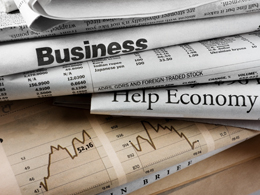 With no major stories breaking today, let’s discuss a few key themes in the news lately.
With no major stories breaking today, let’s discuss a few key themes in the news lately.
On the horizon: carbon restrictions
The EPA’s proposed rule to cut carbon emissions from power plants is a big deal, but despite all the commentary, there really isn’t that much to say so far. The draft rule won’t be finalized for some time, probably next summer. Then, states have a year or so to figure out their own plans, which wouldn’t be finalized until 2017. This story ties in pretty well with my recent post about taxes—specifically, how the government is continuing to take an inch at a time, in a number of areas.
Big bank fines continue
The government is also leaning in when it comes to fining wrongdoers (or alleged wrongdoers). As multibillion-dollar fines of banks and financial institutions become relatively common, government regulators seem to have an old quote in mind: “Why do I rob banks? Because that’s where the money is!” While banks should certainly be punished for breaking the rules, the real victims here are the shareholders. Why not put executives in jail, rather than take money from shareholders? Wait—that wouldn’t generate any revenue. Never mind.
What’s so bad about deflation?
In an effort to avoid deflation, the European Central Bank is widely expected to launch some sort of quantitative easing stimulus program, like those of the Fed and the Japanese central bank. There are two reasons why deflation—that is, a sustained drop in prices—is bad:
- First, while asset prices decline, debt remains the same, so deflation leads directly to loss of equity, making people poorer.
- Second, when people expect prices to decline, they put off spending money, which slows the economy and potentially heightens the deflation problem.
The ECB action should weaken the euro, which will support the dollar’s value but also probably worsen the U.S. trade deficit and the competitive position of America’s exporters. Unintended consequences abound, not least of which is the threat of competitive devaluations, or currency wars, from other countries.
Financial and trade wars heat up
The U.S. has essentially been waging a financial war—and a very effective one—against Iran, and an article in today’s New York Times highlights how those weapons are being more widely applied. In an interconnected global economy, military force is not the only tool. Unfortunately, that can and will be a two-edged sword when applied against the U.S. Currency Wars, by James Rickards, is a good introduction to this topic.
Trade restrictions are another area of economic conflict. After decades of freer trade, protectionism in the form of tariffs and outright trade bans has become more common. For instance, the U.S. recently imposed severe tariffs on Chinese solar panel imports. Expect to see more of this, especially with the attempted devaluation of the yen and the euro. When currencies are cheap, goods sell for less. Imagine GM trying to compete with, say, a Toyota or a Mercedes that is 20 percent to 30 percent cheaper in dollar terms.
Remembering Tiananmen Square
Finally, today marks the 25th anniversary of the Tiananmen Square protests, when brave Chinese students tried to face down their government. They failed, but despite the Chinese government’s best efforts, they have not been forgotten.


 Print
Print

